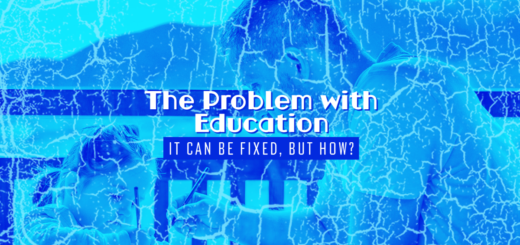Value Added in Teaching
As I was working on my lesson plans this morning, I asked myself “how best can I add value to the classroom experience?” You see, students have the capability to read books and watch lecture videos all by themselves, without my help. From those books and videos, they can learn – without my help. Some of those materials are great. Others not so much. Regardless, how exactly am I adding value to their learning? What I am I doing that a book or video can’t or doesn’t do? Why should students even take my class if it wasn’t required?
After some brainstorming, I came up with these four things.
Motivation
First, I can help students appreciate the value of a subject to their life. The best motivation for learning is internal motivation, a drive to learn the material because a student sees the value of the subject to their own life. All too often though, students don’t see the value in the subject above a vague notion that they must suffer through the subject to get a “degree” to get a “job”. While some textbooks attempt to explain the value of the subject, all too often, the teachers do not personalize the value or do so in half-hearted attempts. I do not want to be one of those professors. I want to work hard on helping students to see the value in the subject each and every day of the class. If I don’t, then everything I do after will be a waste of time because the students won’t care and will tune out.
Conceptualization
But what should I do next? I should help students to conceptualize the ideas we cover by providing relevant examples and clear explanations in a hierarchical fashion. The examples should be unambiguous and explanations integrative with student’s current knowledge. Again, such examples and explanations may be found in some books and videos. And they may be presented in a hierarchical fashion, but that’s assuming that all students start from the same place and have the same experiences. That’s a poor assumption, because students come with a wide variety of experiences and backgrounds. While you can appeal to their similarities, it’s the differences where confusion arises. So one of the many values I can add to students is to discover where the differences arise and address them to help clarify problems with conceptualization. For example, some students when thinking about search engines believe that when a user types in a search term, Google scans all 10 billion websites at that time to find pages with those search terms. That as technically impossible to do in the time and with the hardware currently in existence. By correcting that conceptual misunderstanding, I can help them better appreciate how to do search engine optimization.
Critical thinking
Once concepts are understood, the next area I can help students is with their critical thinking skills. By critical thinking, I refer to the comparisons between two competing beliefs to logically determine what is right or best. For example, suppose a student is tasked to decide how best to optimize a site for search engine queries. Should they use a narrow or broad focus? There are pluses and minuses to each. I can help students develop frameworks and apply logic to their thinking to properly evaluate such a decision. However, such mistakes can only be partially addressed in books. It really requires conversations with students to determine exactly what they are thinking, not just the outcome, to see if they truly understand the problem, to see if they apply correct techniques, and to see if they introduce logical errors in their thinking.
Accountability
Lastly, I can help students develop accountability in their learning through regular meetings, assignments to turn in, and exams. By structuring accountability into the class, students learn to regulate their effort at learning over a long period of time. Furthermore, the instructor can provide feedback at regular intervals to continue moving the class forward as a cohort. While some students are excellent as self-discipline others, in spite of motivation, struggle with the discipline to keep learning unless it is integrated with the class. I can help with that.
While undoubtedly, there are other ways I can add value to the learning experience, these four I see as the fundamental. I must start here and perfect these first. I’m curious to hear your thoughts though. Please share some of your own experiences in the comments.



As someone still green in the field, this is a very helpful piece. Thank you 🙂